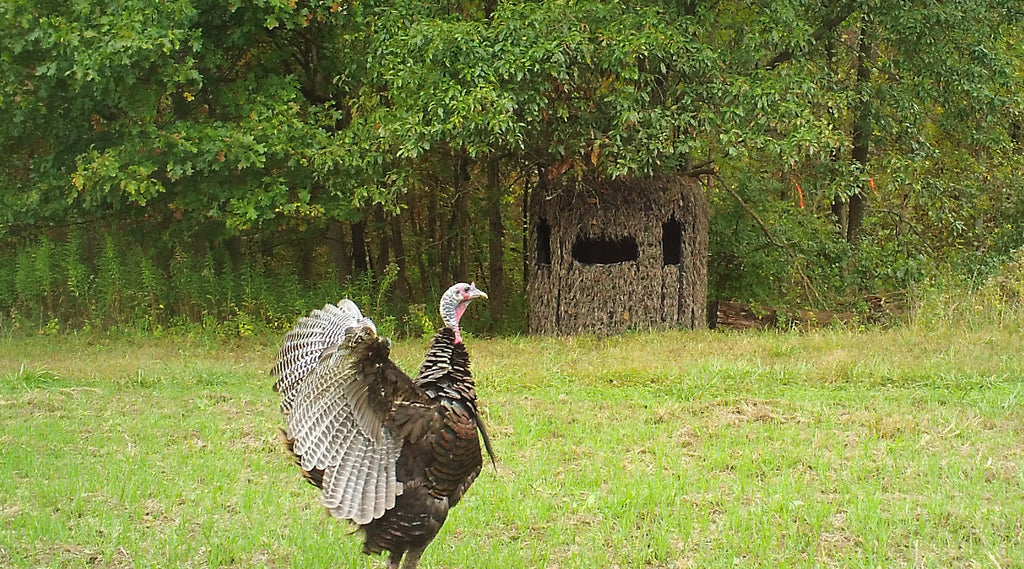
Keeping Tabs on Your Neighbors
5 min read
Spend much time talking to any group of serious hunters and it’s only a matter of time before those hunting around them come up, and it’s pretty rarely a good thing. Often, they don’t hold to the same harvest goals as we do, don’t hunt as “smart” and generally educate every deer within the tri county area that we’re chasing them. Obviously, they’re no where near as good as we are and are ruining our hunting in the process.
Now, I would contend to my last breath that they have every right to engage in any legal activities they so choose on their grounds. It’s up to each of us to find the “fun factor” in hunting and not give a pinch of salt what the neighbors may think, as it’s none of their darn business.
On the bright side, the exact same set of rules applies to us. Because of that, if we employ a little creativity, we can literally transform those hunt ruining neighbors into hunt making resources. Here’s just a couple ways how.
Understanding Training and Pressure
Before we get deeper, we need to flesh out a couple points. The first is that deer are no different than our dog at home, in one important way. We can train them to fear or accept anything.
To illustrate, imagine keeping the dog’s bowl full at all times, but hiding in the corner from 6 AM to 6 PM. During that time, whenever the dog starts eating, you come flying out of the corner and kick it in the butt across the room. Now, please don’t do that, but you shouldn’t have to in order to realize that it’s only a matter of time before that dog is trained not to fear food, but to shift that feeding exclusively to between 6 PM and 6 AM.
The same applies to hidden fences. Feel free to leave the shock collar on until the batteries die. After that, odds are you can remove the collar and the dog stays in the yard, as its already been successfully trained not to leave.
Now, factor how deer deal with hunting pressure into the equation. Every telemetry study on pressured deer I’ve seen essentially concludes the same thing. When pressure ramps up, it is very rare for the pressured deer to leave their home range. That makes sense, as it’s all they know. Instead, they head for the areas they feel safe on that ground and generally stay in those areas during daylight.
In other words, we trained them to go where we aren’t. If the area is more than a very small pocket of cover, they’ll often even move freely within those areas during daylight, but rarely leave them until after dark, typically returning again before first light.
Making the Neighbors Your Friends
I’m sure some are already connecting the dots. In order to transform those neighbors from the scourge of our humanity to our best friends, make your ground the area they head to when they feel pressure. Doing that is actually very easy in principle. Make the deer feel like they aren’t being hunted there and the pressure literally drives them into your arms. It’s really that simple.
Where it gets slightly more challenging is to be able to hunt the snot out of that ground, while still tricking the deer into feeling they’re safe there. To do that, they can’t smell, hear or see you. It really doesn’t matter if you’re there or not, so long as that’s the case, the impact on those deer is exactly the same.
The rub is that low impact, high odds stands tend to be rare in nature. For those that control their hunting grounds, that merely means you may want to lay out improvements to manufacture those low impact, high odds stands. There well may not be a low impact, high odds option, a mere 100 yards off the road. Get in there with a chainsaw alone and you’re likely to be able to make one, though. Bring some seeds with and odds just got better.
I’m afraid this piece isn’t about the specifics of how to manufacture these locations, as that’s a piece in and of itself. In fact, it took me an entire book. The key though is merely being creative and manufacturing a deer flow that leads them past low impact, high odds stands. Just that quick, the neighborhood shenanigans is working for not against you.
The application doesn’t stop there, though. Remember, we humans are training deer every time we step into the deer woods what to fear and what’s harmless. That applies to more than just sucking pressured deer to your grounds.

In areas where deer have been trained to avoid blinds, merely brush them in a bit or use more natural variations, such as Bale Blinds
Watch how the neighbors hunt and see what not to do. A great example is if and how they use enclosed, elevated box and ground blinds. If they’re using a bunch of them, it’s a pretty safe bet they’re trained deer to fear them.
What?! Now you’re telling me that they are ruining my stand options, as well? No, not at all. Elevated and ground blinds can still be deadly effective, no matter how much the neighbors do or don’t use them.
The key is merely how much blending one must do. For example, I hunt some areas that are about as high of hunting pressure as it gets, but it’s most all stalking and tree stand hunting. In those scenarios, I have nothing against setting any kind of a blind right in the wide open. Now, it admittedly takes special circumstances for me to put them in the open, but it has nothing to do with deer fearing my blinds. It’s merely that pressured deer don’t enter the open during daylight much, unless forced.
On the flip side, another property I manage is in what I’d consider a very lightly pressured area, with the exception of an outfitter on one side. They have a handful of elevated, homemade boxes that are housing hunters more days than not from the first day of deer season to the last. Every elevated blind I set, I ended up moving to break them up better, as the outfitter trained the deer to avoid any set out in the open. After blending them into some trees, they’ve become truly killer setups.
Conclusion
I know human nature is generally to find others to pin our issues on. If that works for you, by all means continue. Personally, I’ve found much more success in doing what I can to transform negatives into positives. Keeping tabs on the neighbors, realizing that they are training the local deer what to avoid, can put us in position to transform their activities from negatives to positives, bolstering our hunting experiences.
Besides, life’s too short to go around being mad at the neighbors. Most of them are pretty great people. They merely don’t always hunt like we do.
Leave a comment
Comments will be approved before showing up.

